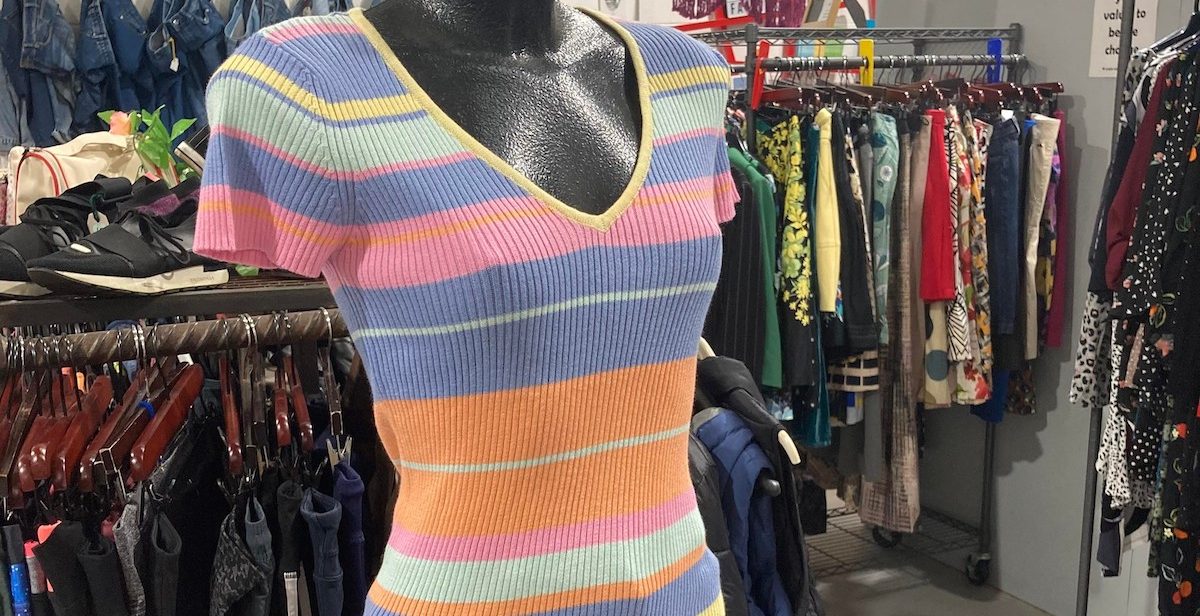This week we hear from guest blogger, Declan Wiseman, about his views on fast fashion. Declan is a writer with a passion for tackling climate change. He works for Green Heart Collective.
It’s always tempting to pop into a shop when you’re walking down the high street or snap up a deal online. Maybe it’s those big bold letters. Maybe it’s the discount codes or signage screaming at you. The fashion in the windows or your inbox is always so on-trend, so desirable. But if it’s here to stay, can we make fast fashion last longer?
We’ve become used to having fast fashion in our lives to the point where we’ve ended up with mountains of clothes. They’re readily available, cheaply made, and all too easily thrown away.
How long will a fast fashion garment last?
The life span of a T-shirt depends on how much you wear it and how carefully you wash it. And how long a fast fashion item lasts also largely depends on its material. A pair of jeans, for example, is more likely to last than a thin summer shirt or sheer top. A thicker T-shirt is more likely to outlive a thinner one.
And even within fast fashion, you’ll notice a difference in quality. For example, new, modern ‘drop shipper’ clothes are mass-produced overnight to respond quickly to micro-trends, giving you the designer look, but not for long! On the other hand, you can still find longer-lasting classic staples on the high street.
But the real thing you should consider when thinking about sustainable clothing is how long you will actually USE your fast fashion garments.
If you’re anything like me, you’ll have a mountain of unused clothes in your wardrobe. And sadly, thousands of items are thrown away to rot in landfill each year. But even in landfill, clothes decompose at different rates. Cotton takes between one and five months to break down while nylon items can take up to 40 years.
Clothes shouldn’t be ending up in landfills in the first place.
Instead, let’s encourage a circular fashion economy. One way to do this is to reuse the clothes you already have. And that means making sure you find new homes for unwanted items.
The Green Heart Collective: making fast fashion last longer
The Green Heart Collective is a social enterprise based in Gateshead, Northeast England. It was set up by Helen and Andy Redfern to help redirect preloved clothes to new homes. Working with local businesses as well as accepting donations from the general public, the collective provides consumers with an alternative to buying brand new.
The Green Heart Collective is a curated second-hand store with online outlets. You can buy your favourite high street fashion brands, vintage and retro clothes, and preloved fast fashion across all its platforms. The social enterprise also works closely with local charities to help keep clothes moving.
My role in the Green Heart Collective is content marketing. This entails writing lots, managing social media accounts and thinking about ways we can make buying preloved even more appealing.
During my time at university, I did a lot of work on ecocriticism, ecopoetics and world systems. And I was aghast after every lecture about just how much work there is still to do to tackle climate change. I wanted to use my written skills to help and landed my first full-time career job with Green Heart Collective.
I find motivation in responding to the climate emergency, which I know affects not only the lovely nature reserves and parks that I enjoy exploring but also people and animals around the world.
Helping refugees
The collective also works with Care4Calais, a charity delivering emergency aid to refugees in Europe. Sometimes people donate clothing items that are unsuitable for the people they’re meant for. Green Heart Collective take these clothes and then donates back to Care4Calais things that are more suitable, such as suitcases to allow recently arrived asylum seekers to keep their belongings securely until more permanent accommodation is available.
So can we make fast fashion last longer? Yes! If we look after our garments, we can pass them on for someone else to wear. It’s time to enjoy a slower kind of fashion, making use of the fantastic second-hand clothes that are just waiting to be discovered.

